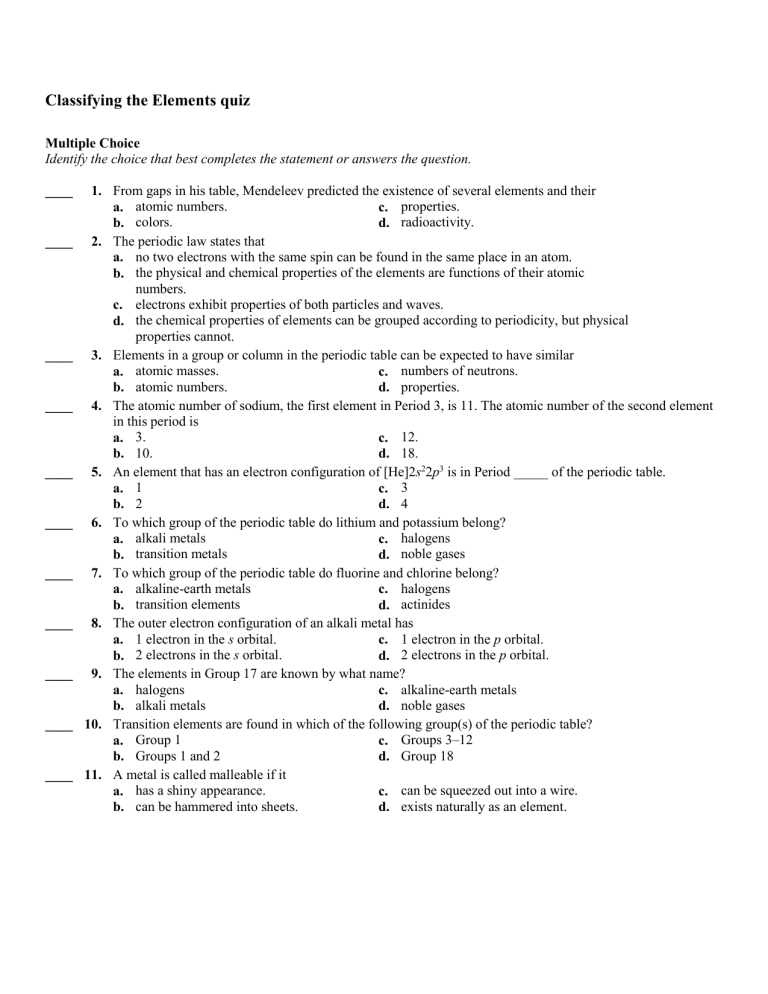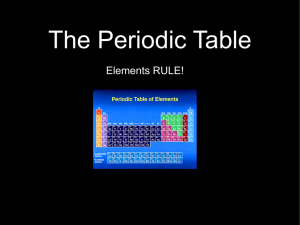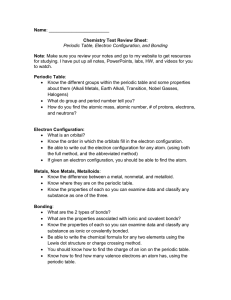
Classifying the Elements quiz Multiple Choice Identify the choice that best completes the statement or answers the question. ____ ____ ____ ____ ____ ____ ____ ____ ____ ____ ____ 1. From gaps in his table, Mendeleev predicted the existence of several elements and their a. atomic numbers. c. properties. b. colors. d. radioactivity. 2. The periodic law states that a. no two electrons with the same spin can be found in the same place in an atom. b. the physical and chemical properties of the elements are functions of their atomic numbers. c. electrons exhibit properties of both particles and waves. d. the chemical properties of elements can be grouped according to periodicity, but physical properties cannot. 3. Elements in a group or column in the periodic table can be expected to have similar a. atomic masses. c. numbers of neutrons. b. atomic numbers. d. properties. 4. The atomic number of sodium, the first element in Period 3, is 11. The atomic number of the second element in this period is a. 3. c. 12. b. 10. d. 18. 5. An element that has an electron configuration of [He]2s22p3 is in Period _____ of the periodic table. a. 1 c. 3 b. 2 d. 4 6. To which group of the periodic table do lithium and potassium belong? a. alkali metals c. halogens b. transition metals d. noble gases 7. To which group of the periodic table do fluorine and chlorine belong? a. alkaline-earth metals c. halogens b. transition elements d. actinides 8. The outer electron configuration of an alkali metal has a. 1 electron in the s orbital. c. 1 electron in the p orbital. b. 2 electrons in the s orbital. d. 2 electrons in the p orbital. 9. The elements in Group 17 are known by what name? a. halogens c. alkaline-earth metals b. alkali metals d. noble gases 10. Transition elements are found in which of the following group(s) of the periodic table? a. Group 1 c. Groups 3–12 b. Groups 1 and 2 d. Group 18 11. A metal is called malleable if it a. has a shiny appearance. c. can be squeezed out into a wire. b. can be hammered into sheets. d. exists naturally as an element.






